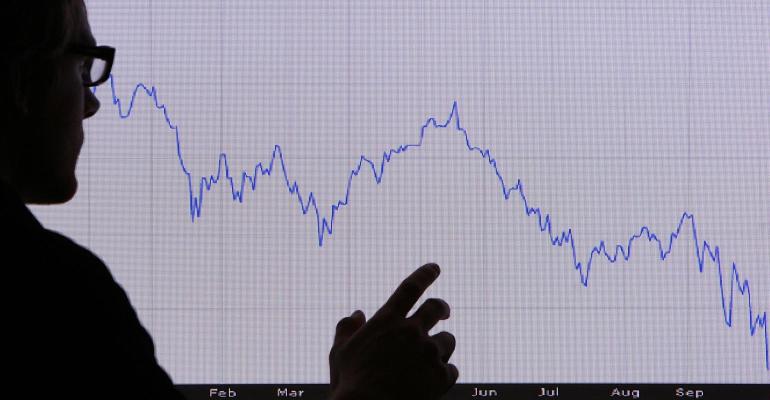(Bloomberg) -- The pioneer of the world’s first “buffer ETFs” — exchange-traded funds that limit losses during market selloffs — has launched a new product that offers investors complete downside protection.
Investors in the $7.5 trillion ETF universe can now put money behind the Innovator Equity Defined Protection ETF, which began trading under the ticker TJUL on Tuesday. The offering comes from Innovator Capital Management, which launched the first so-called buffer ETFs, also sometimes referred to as defined-outcome funds, in 2018.
Buffer funds, as the name suggests, offer buffered exposure to stocks by limiting investors’ downside risk while also capping upside potential. Since their inception, the products have attracted industry heavyweights like BlackRock Inc. — the world’s largest ETF issuer — and drawn roughly $5 billion of inflows so far this year, Bloomberg Intelligence data shows.
Buffer funds can shield against a wide range of losses should their respective gauges drop, though the most popular ones tend to be in the 15% buffer range, according to Bloomberg Intelligence. Yet, Innovator says that its TJUL fund — which will track S&P 500 returns up to a capped percentage over a two-year period — will be the first of its kind to protect against 100% of stock losses.
The company sees the tremendous amounts of cash going toward pockets of the insurance market — such as fixed-indexed annuities — as indicative that there’s demand for the type of exposure TJUL offers. That market has rarely been challenged, said Graham Day, chief investment officer at Innovator.
“If we look at the insurance and structured-note world, we find that there is far more demand for products that give you some equity upside, but with 100% downside protection built into the products,” said Day. “That’s what we are going after with this Defined Protection ETF — to, for the first time ever, give investors access to the equity markets, but with a 100% buffer built into the product.”
Buffer-type products have made equity markets more accessible for investors looking to curb downside risk, “without having to go to an insurance company — and cheaper,” said Bloomberg Intelligence analyst Athanasios Psarofagis. “The strategies make a lot of sense this year, where there hasn’t been strong conviction in the market, so it’s a good way to participate but pay for some protection versus going all in.”
Innovator is charging an annual 0.79% fee for its TJUL ETF.
The company offers more than 50 buffer funds which have collectively drawn over $12 billion in assets since 2018, data from the company shows. Among the largest vehicles are the Innovator S&P 500 Power Buffer ETF (PAPR), totaling about $687 million in assets, and the Innovator S&P 500 Power Buffer ETF (PJUL), which has roughly $834 million in assets.
Those ETFs are up about 11% and 15% so far this year, compared to a roughly 18% gain in the S&P 500.
--With assistance from Katie Greifeld and James Seyffart.





